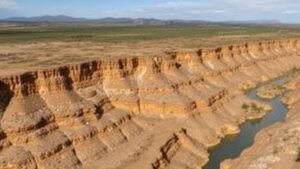Using Heavy Mineral Layers as Clues to Gold Deposits in Riverbanks
Using Heavy Mineral Layers as Clues to Gold Deposits in Riverbanks
Gold prospecting has long captivated the interest of geologists, miners, and hobbyists alike. One innovative approach to locate gold deposits lies in the study of heavy mineral layers found in riverbanks. This article explores how these heavy minerals serve as indicators of gold presence, the underlying geological processes, and practical applications for prospectors.
The Importance of Heavy Minerals
Heavy minerals, typically defined as those with a specific gravity greater than 2.8 g/cm³, play a crucial role in sedimentology and paleogeography. Examples of heavy minerals include zircon, rutile, ilmenite, and, of course, gold. Identifying these minerals in alluvial deposits can indicate hydraulic sorting processes, which are critical for understanding potential gold concentrations.
Geological Processes and Heavy Mineral Concentration
Gold is commonly found in river systems due to erosion and weathering of gold-bearing rocks. Understanding how heavy minerals accumulate can help prospectors identify likely locations for gold deposits. process involves:
- Erosion: Natural forces break down surface rocks containing gold.
- Transportation: Rivers and streams carry these minerals downstream.
- Deposition: Changes in flow velocity and sediment load allow heavy minerals to settle, forming layers in riverbanks.
This sequence of processes results in the formation of placer deposits, where heavy minerals concentrate in specific locations along river systems. Notably, gold does not easily dissolve in water or get transported far from its source, making these deposits reliable indicators.
Case Studies of Successful Gold Discoveries
Several notable case studies highlight the effectiveness of using heavy mineral layers to uncover gold deposits:
- Yukon Territory, Canada: In the Klondike region, heavy mineral surveys revealed high concentrations of gold associated with other heavy minerals, leading to significant gold discoveries during the late 19th century.
- California Gold Rush: Prospectors learned that gold often accompanied other heavy minerals in riverbeds, such as magnetite, which guided successful panning locations.
These examples illustrate that sedimentological analysis of riverbanks can yield vital information for prospecting efforts.
Methodological Approach to Identifying Gold Deposits
Prospectors often utilize a systematic method to search for gold using heavy mineral layers:
- Sample Collection: Collect sediment samples from various river locales, focusing on areas where water slows down or where bends occur.
- Mineral Analysis: Employ techniques such as X-ray diffraction or heavy liquid separation to identify and quantify heavy minerals present in the samples.
- Mapping Concentrations: Use GIS technologies to map concentrations of heavy minerals along riverbanks, identifying hotspots for further investigation.
Considerations and Challenges
While utilizing heavy mineral layers is a promising strategy for locating gold, certain challenges must be recognized:
- Environmental Regulations: Prospectors must navigate various environmental regulations that limit exploration and extraction activities.
- Sampling Variability: Heavy mineral concentrations can be irregular, necessitating extensive sampling to achieve reliable results.
Actionable Takeaways
For aspiring prospectors and geologists, using heavy mineral layers in river systems as clues to gold deposits is a powerful method grounded in geological understanding. Here are actionable steps to consider:
- Invest in proper training on sedimentology and mineral analysis techniques.
- Use geospatial tools to enhance exploration strategies effectively.
- Stay informed about regional mining laws to ensure compliance during prospecting efforts.
By adopting a methodical approach to studying heavy mineral layers, individuals can increase their chances of discovering valuable gold deposits in riverbanks, connecting scientific research with practical application.


